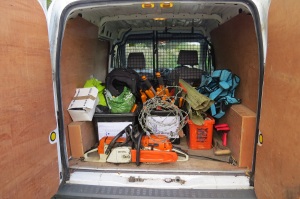Last year, between January and March, Natural England surveyed the Avon catchment, including Lambrok Stream, for signs of wild beaver. Their report was published last week.
The survey teams, in canoes and on foot, surveyed 280km of channel including the Avon upstream of Bath, and the Biss as well as 1.5 km of Lambrok Stream from its confluence with the Biss to the Lambrok Close entrance into the reserve.



They searched for trees and woody shrubs that had been cut or gnawed and for signs of feeding near the water’s edge or trails where foodstuff had been dragged from inland. They looked for dams, lodges and wood stores, burrows and channels, for the piles of soil or debris where beavers leave scent marks and, of course, hoped for sightings of live animals.
Sadly, there are no signs of beaver on the Biss or Lambrok Stream but 469 indicators were found on the Avon, upstream of Bath. The nearest territories to the reserve are on the Avon between Trowbridge and Melksham (there is a map below). The River Frome and its sub-catchment area are the local beaver hotspots. It is here that all but one of the 20 recorded dams were found.



The territories on the Avon were all assessed as being of low impact on the management of the surrounding land, perhaps because these territories are not as well established as those in the Frome sub-catchment, where several medium-high impact effects where recorded. Damming drainage channels and, as a result, flooding access roads seemed to be the most significant effect.
Overall, the survey concluded that there are 13 beaver territories in the Avon catchment area comprising somewhere between 40 and 60 individual animals. This is brilliant: the return of such an environmentally important species to the Avon and its tributaries is a real step forward.






How very interesting!
Isn’t it? I had no idea until somebody sent me a link to NE’s report. I hope we get beavers in the Biss; that would be terrific.